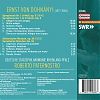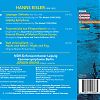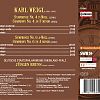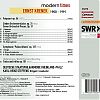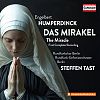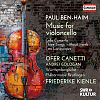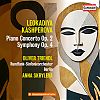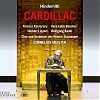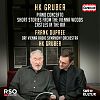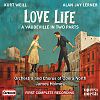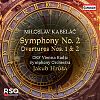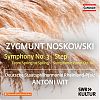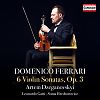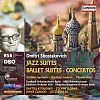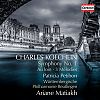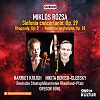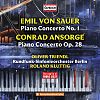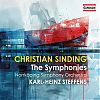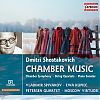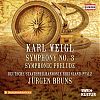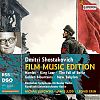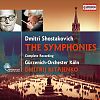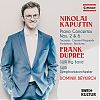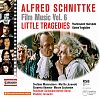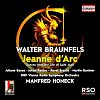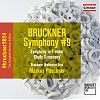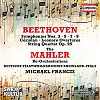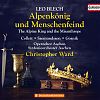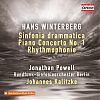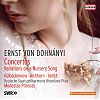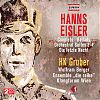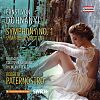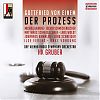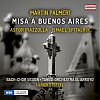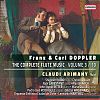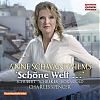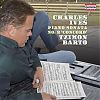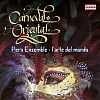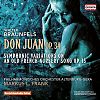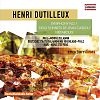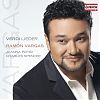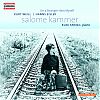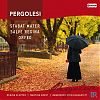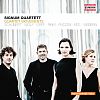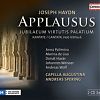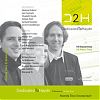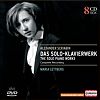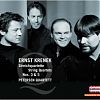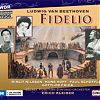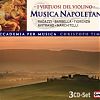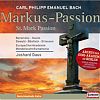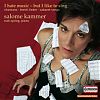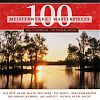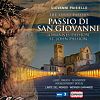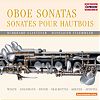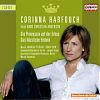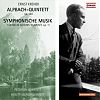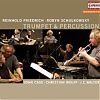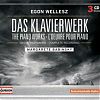cd
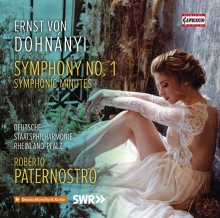
ERNST VON DOHNANYI (1877-1960)
DEUTSCHE STAATSPHILHARMONIE RHEINLAND-PFALZ · ROBERTO PATERNOSTRO
The Symphony No. 1 in D minor op. 9 belongs to Dohnányi’s early years of success.
Among all the influences of the late Romantic tradition, that by Brahms’ music can be discerned here once more. From it, Dohnányi forms a kind of early Neo-Romanticism that can be viewed as a continuation of the 19thcentury while avoiding the Expressionist, sprawling violence of the beginnings of Modernism in the 20thcentury. Reminiscent of Mahler and Strauss is the sovereign treatment of the large orchestra, in which many details stand out, making a major contribution towards the quality of the work. The Symphonic Minutes op. 36 was written in 1933 in the context to compose a Hungarian dance game. With this CD Capriccio starts a new Edition with recordings of these still less known but powerful Music from the hungarian Composer Ernst von Dohnanyi.
Youtube
Weitere Bilder
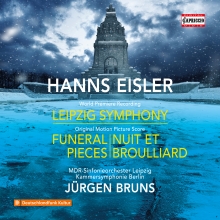
HANNS EISLER: Leipzig Symphony Funeral Pieces · Nuit et brouillard
Jürgen Bruns
HANNS EISLER (1898 – 1962)
World Premiere Recording
[1] – [4]
Leipziger Sinfonie (1959–1962; 1998)
Rekonstruiert und vervollständigt vonTilo Medek (1940-2006)
Leipzig Symphony (1959–1962; 1998)
reconstructed and completed by Tilo Medek (1940-2006)
[5] – [13]
Trauerstücke aus Filmpartituren (1961–1962)
eingerichtet von Jürgen Bruns und Tobias Faßhauer (2015)
Funeral Pieces of Motion Picture Scores (1961–1962)
arranged by Jürgen Bruns and Tobias Faßhauer (2015)
[14] – [26]
Nuit et brouillard (1955)/ (Nacht und Nebel / Night and Fog)
Original Motion Picture Score
MDR-Sinfonieorchester Leipzig (1-13)
Kammersymphonie Berlin (14-26)
JÜRGEN BRUNS, Dirigent / conductor
In his late years Hanns Eisler concentrated more and more to compile his film music scores for the concert hall. That's the case also with his Leipzig Symphonywhich was not completed when he died. The that time young composer Thilo Medek recognized this gap and completed the symphony with different pieces out of Eislers film music scores.
The compilation of Funeral pieces from Film Music scoreshas been realized by Tobias Faßhauer and Jürgen Bruns in 2015. The scores uses film music from 1947/48 Hollywood movie So well remembered. Already at the end of 1955 Eisler wrote the music for the KZ Documentary Nuit et brouillard (Night and Fog) for the french movie director Alain Resnais (1922–2014). After many successful concert performances (with and without movie) this piece can be listened now the first time on CD.
Hörprobe
Weitere Bilder
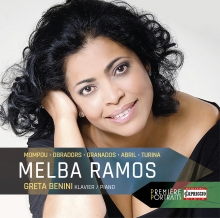
Premiere Portraits: Melba Ramos
MELBA RAMOS (soprano) · GRETA BENINI (piano)
With “Première Portraits”CD-Edition Capriccio set an example for the support of young and talented artists and invite them to release their première CD for a worldwide audience.
Melba Ramos, Puerto-Rican Soprano, studied at Pablo Casals Conservatory of Music in San Juan, capital city of her home country. She distinguished herself by winning several opera singing prizes. After being active at the Opera Studios in Cologne and in Wuppertal, she made her way as coloratura soprano to the Ensemble of the Volksoper in Vienna in 2003 to which she is still dedicated today. In parallel, numerous guest engagements led Melba Ramos to esteemed places to work at as the Komische Oper Berlin, the Deutsche Oper Berlin, the Staatsoper Unter den Linden and further Opera Houses in cities such as Bonn, Mannheim, Bremen, Kassel, Hamburg, Hannover, Saarbrücken, Nuremberg and many more.
Weitere Bilder
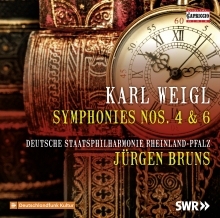
KARL WEIGL
DEUTSCHE STAATSPHILHARMONIE RHEINLAND-PFALZ JÜRGEN BRUNS
In terms of style, with his works linked to basic tonalities Weigl drew on the sound realm of late Romanticism, from whose aesthetics he never departed in favour of more progressive contemporary trends. Whereas Weigl’s Symphony No. 1, written in 1908, associatively evokes the mood of a composer thinking of new territory and inquiring into the future, the dissimilar pair of his Symphonies Nos. 4 and 6 shows the musician’s intellect at historically distinctive periods, allowing an assessment to be made as to whether what could be expected, intended and hoped for at the time of his early works was achieved or whether it developed in an entirely different manner. The background to Symphony No. 4 in 1936 was the emergence of dictatorial Austro-Fascism. Symphony No. 6 of 1947 is in a certain sense a continuation and a conclusion following the end of the Nazi terror and a war that did not remain without profound changes and far-reaching effects for almost all the countries in the world.
Youtube
Weitere Bilder

ERNST KRENEK
DEUTSCHE STATSPHILHARMONIE RHEINLAND-PFALZ KARL-HEINZ STEFFENS
From the outset, Ernst Krenek stood between the sometimes antagonistic musical worlds of
his mentor Franz Schreker, on the one hand, who wrote in the world of late Romanticism, and Arnold Schoenberg, on the other, who broke new ground. So, his own development towards becoming a unique personality in modern music history progressed correspondingly slowly.
In his subsequent travelling years, as a composer he was on a quest for new means of expression, finally culminating in two such contrasting works as the jazz opera Jonny spielt auf and the technically strictly twelve-tone opera Karl V. Afterwards, he occasionally resorted to these earlier stylistic devices like we can hear on this recording as example of the 1927 composed Potpourrieand years later written Tricks and triffles (1945)


